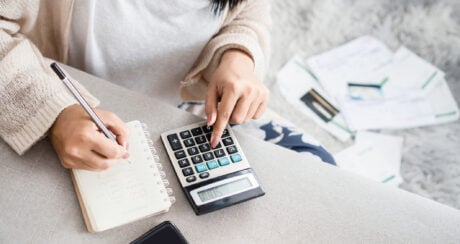Just as you check your bank statements to stay on budget, it’s important to cross-check the outstanding balance on your credit card statement with the list of transactions for that statement period.
What is a credit card statement?
A credit card statement is a monthly report of your credit card usage. A statement lists:
- transactions (including purchases, balance transfers and cash advances)
- outstanding balance
- minimum payment (amount and due date)
- amount of credit limit used (available credit)
- repayment information
- interest
- fees and charges
- rewards — points or cashback — earned.
The bank will send you a new statement every month either online or in the mail.
🤓 Nerdy Tip: make your finances fun
Going through your credit card statement won’t be the highlight of your month, but you can make it an empowering money management skill. Dedicate one hour every month for a quick health check — see if your behaviour coincides with your financial goals and if you can make any improvements next month.
Use your statement to strategise
Checking your credit card statement isn’t just about confirming what you owe and by when. Rather, it’s an opportunity to review all your transactions and rewards. Your statement tells a story about your financial life. You can review the real cost of each item with interest and fees. This process can be confronting, but that’s exactly why it’s important.
By examining where you’re unnecessarily spending, you can make positive behavioural and mindset changes. This is where the true value of checking a credit card statement lies.
Reviewing your credit card statements
Every bank or credit card company will have its own credit card statement format, but they should all contain the same information. Here are the details to look for in your statement and why they’re important
Account summary
- Why? To know where you stand.
- How? Your account summary recaps the changes to your account since the previous statement. It includes your opening and closing balances, new transactions, total fees, any repayments made, and the minimum payment due.
Minimum payment and due date
- Why? To know what you owe.
- How? These details will likely be repeated in various sections of the statement. The minimum payment represents your minimum repayment obligation for that month. This component is important, so most people skip to this part.
Minimum repayment warning
- Why? To know what happens if you only make minimum payments.
- How? This section will list how long it’ll take to repay the debt in full if you only pay the minimum amount due monthly. It’ll present a couple of scenarios such as ‘if you just pay the minimum’ vs ‘if you pay more’. Use this simple forecaster as motivation to make larger repayments.
Interest and fees
- Why? To know what you paid in fees.
- What to know: Check what the bank charges in interest and account fees. Or, in other words, what your lender made from your credit card usage in the previous month.
Transactions
- Why? To know how your card was used.
- What to know: This is the list of transactions made using your credit card. Go through this section with a fine-tooth comb to make sure you recognise every charge and have approved each purchase. This helps you discover errors or fraud.
Credit limit and available credit
- Why? To know how much credit you have available.
- What to know: Double-check your credit limit and how much you have still to use. Your available credit is simply your limit minus your closing balance. For example, if the bank pre-set a $5,000 limit and your closing balance is $1,500, you have $3,500 of available credit.
Rewards
- Why? To know your reward points.
- What to know: If your credit card is connected to a rewards program such as Qantas Frequent Flyer, your statement will list the total points you have earned to date (and for what transactions).
Repayment options
- Why? To know how to make your credit card payment.
- What to know: This outlines the various ways you can pay the bill. The most common way is through online banking while paying over the phone or through autopay from a chosen account are other convenient options. If you have autopay set up, it will list it on your statement. For example, your statement should include a note such as: ‘We will seek to make a direct debit payment from your nominated account on 20/10/2022, consistent with your request’.
🤓 Nerdy Tip
If you’re having difficulty paying your credit card bill, reach out to your bank. Keep your recent statement handy for quick access to your account number and other important details.
Errors and unknown charges on your statement
Make a regular habit of checking your monthly statement to spot any discrepancies. Unknown or incorrect charges can easily get missed if you only log into online banking every few days to check your balance.
Reviewing your credit statement adds another layer of protection against errors and fraud. If you see a charge you don’t recognise, contact your bank immediately.
Additionally, maintaining regular communication with your bank is smart financial practice. Don’t be afraid to build a relationship and lean on them for the best possible terms and conditions, when necessary. Remember, they have a bird’s eye view of your entire financial situation – your credit, debt, savings and cashflow.

Guide To Making Credit Card Payments
When you make a credit card payment, you’re repaying what you owe. You can pay off the entire balance or make a partial or minimum payment.

Requesting A Chargeback On A Credit Card
A chargeback on a credit card is like a refund. You can request a chargeback by disputing a transaction on your credit card statement.

How To Dispute A Credit Card Transaction
When you dispute a transaction, you tell your credit card provider, ‘I’m not paying for that,’ and asking for help getting the money back.

How Do Credit Card Interest Rates Work?
Everything you need to know about credit cards to use them responsibly.

